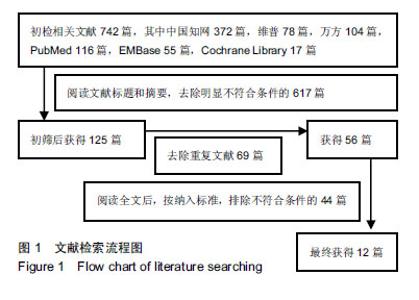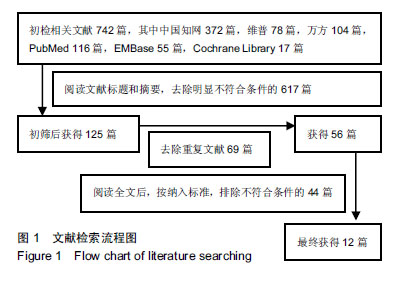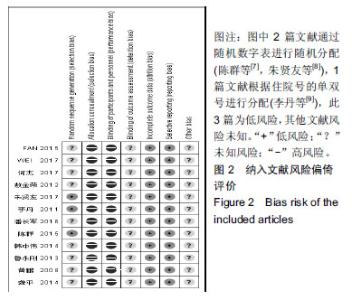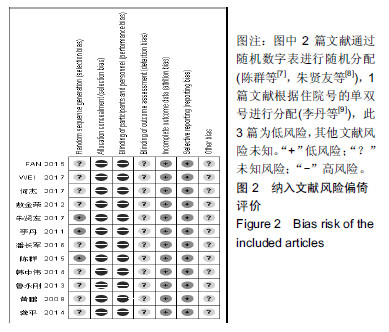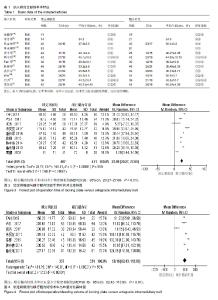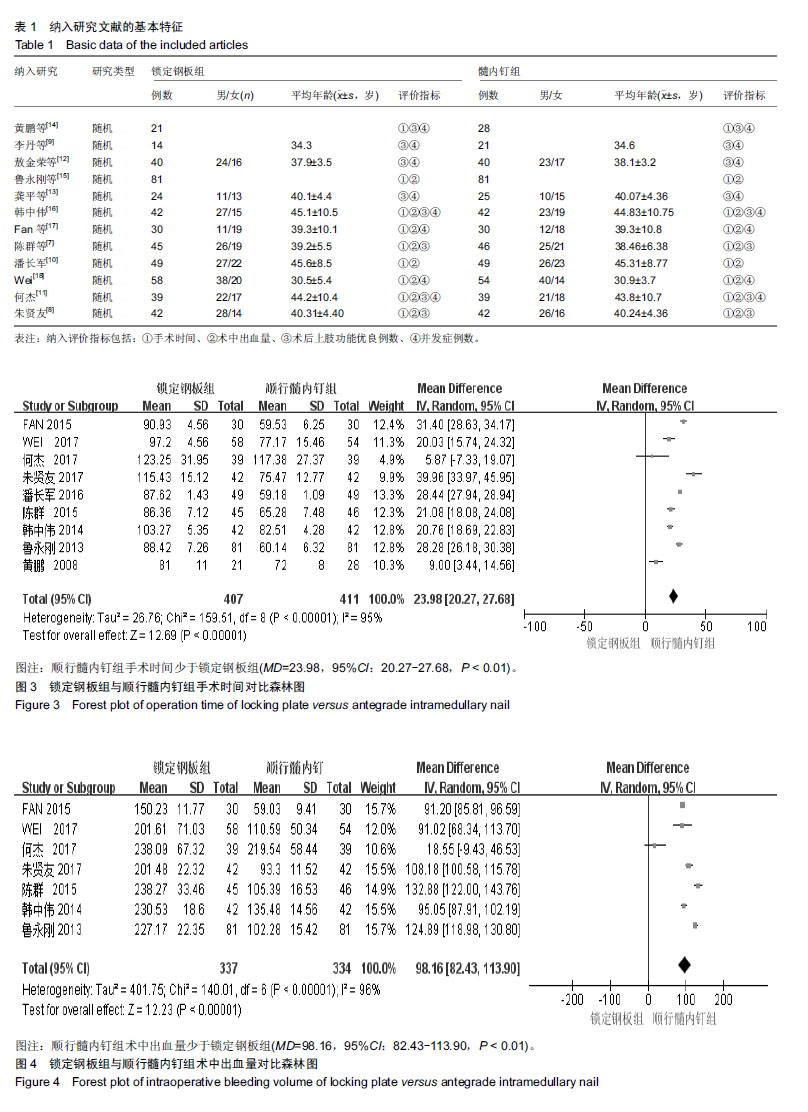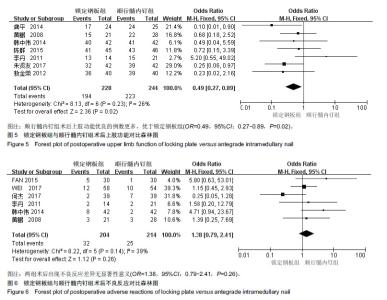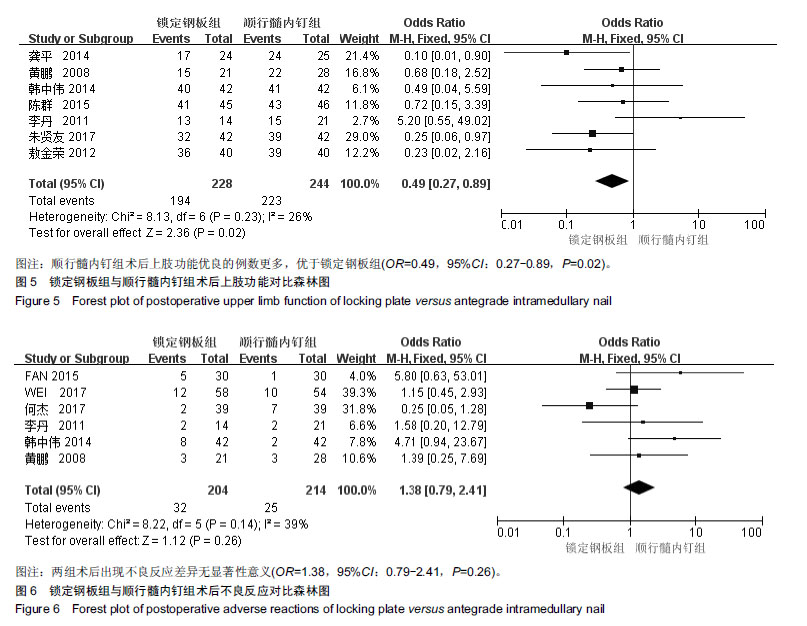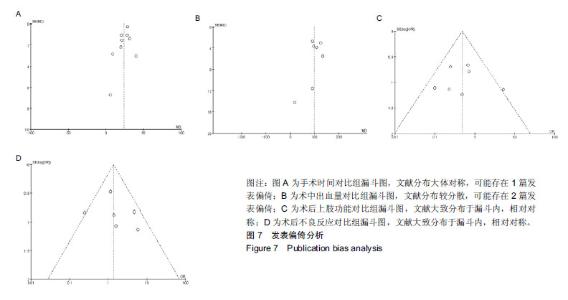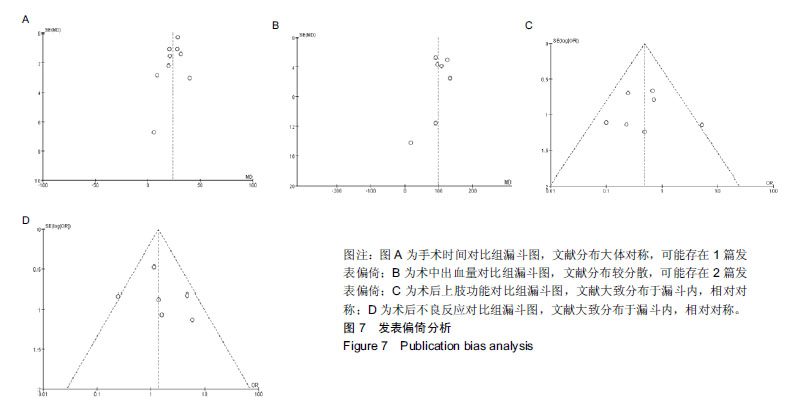Chinese Journal of Tissue Engineering Research ›› 2019, Vol. 23 ›› Issue (24): 3924-3930.doi: 10.3969/j.issn.2095-4344.1226
Previous Articles Next Articles
Clinical effect of locking plate versus anterograde intramedullary nail in the treatment of adult humeral shaft fractures: a meta-analysis
Wang Lei, Li Zilong, Yuan Binbin, Wu Qingwei, Tang Fengming
- Logistic University of Chinese People’s Armed Police Force, Tianjin 300162, China
CLC Number:
R459.9|R615
